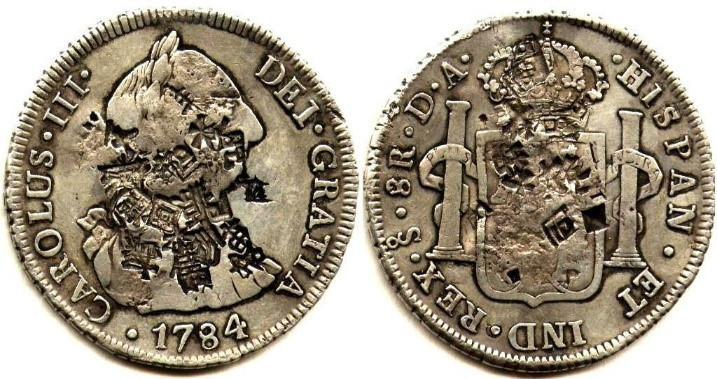The social lives of the Piece of Eight may serve to illustrate its extraordinary global impact. Our example is a coin that carries the merchant marks of Chinese silver assessors. This Piece of Eight is stamped with what are known as ‘chop marks.’ From the early 1600s China imported more silver than any other good or commodity, lacking institutions to mint her own. Spanish American coins offered China a valuable import that could support the overseas sale of Chinese manufactures, such as porcelain, silk and other textiles that Europeans subsequently re-exported worldwide. Chinese assayers or shroffs tested the quality of the imported coins and stamped them with their own marks each time they were exchanged.
Charles III silver dollar with Chinese marks
Charles III silver dollar minted in Santiago de Chile (1784), stamped with Chinese merchant marks (courtesy of the personal collection of the author).
Alejandra Irigoin and Bridget Millmore
Further reading
- Flynn, D. (1996) World Silver and Monetary History in the 16th and 17th Centuries (Aldershot: Variorum).
- Irigoin, A. (2018) ‘The rise and demise of the global silver standard’, Handbook of the History of Money and Currency (Singapore: Springer).
- Lin, M.H. (2006) China Upside Down: Currency, Society, and Ideologies, 1808–1856 (Cambridge, MA: Harvard University Asia Center).
- TePaske, J., and K. Brown (2010) A New World of Gold and Silver (Leiden: Brill).
- Von Glahn, R. (1996) Fountain of Fortune: Money and Monetary Policy in China, 1000–1700 (Berkeley, CA: University of California Press).





